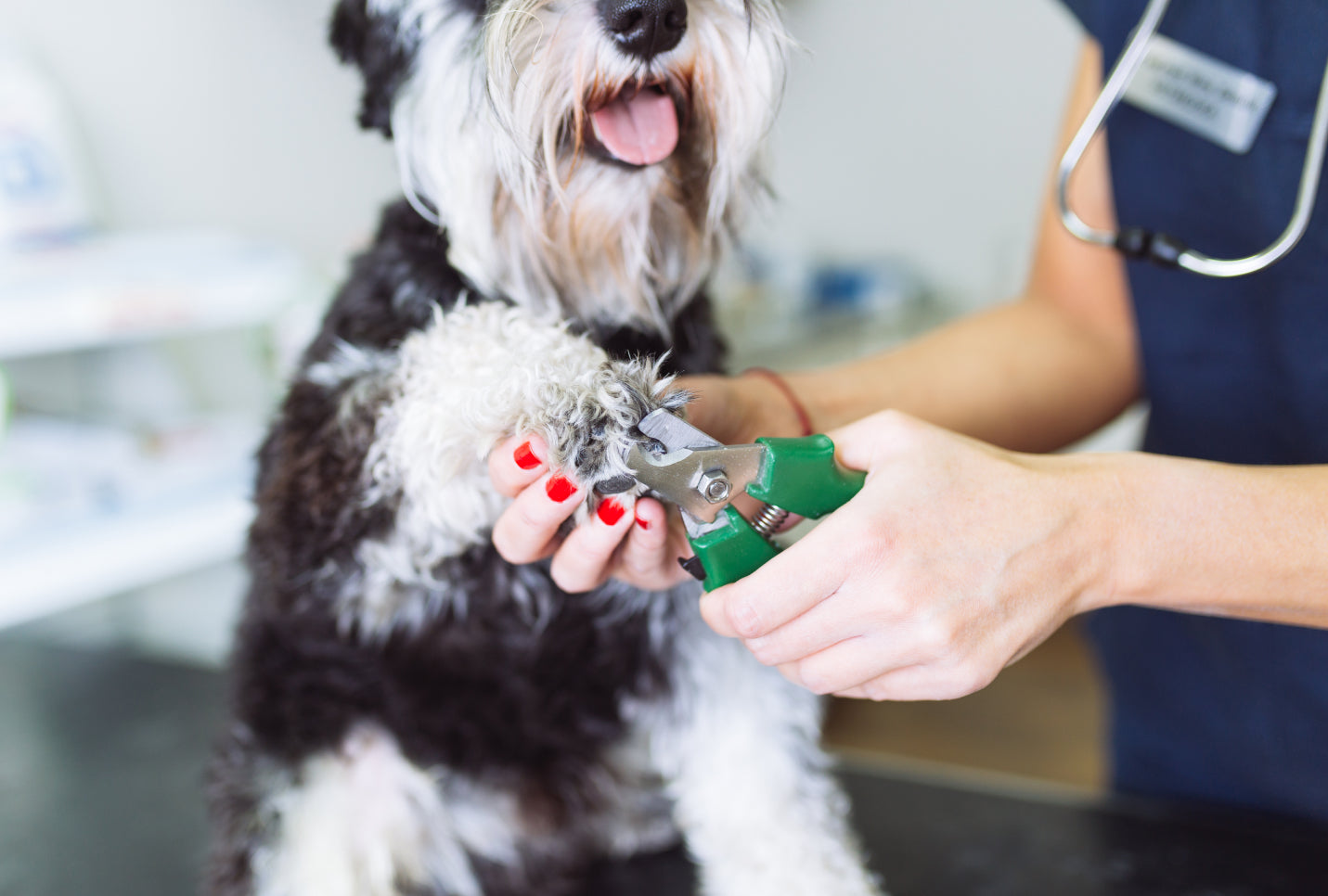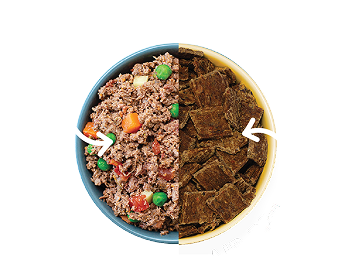
7 Steps on How To Trim Dog Nails
If you're a dog owner, you know that regular nail trimming is an important part of your dog grooming routine. But let's be honest — the thought of trimming your dog's nails can sometimes be intimidating.
Don't worry, though! With the right knowledge and approach, you can confidently tackle this task and ensure your pup's paws stay happy and healthy.
In this article, we'll guide you through the step-by-step process of trimming your dog's nails, providing valuable tips and techniques along the way. So if you're ready to give your pup the perfect manicure — keep reading.
The Benefits of Trimming Your Dog's Nails
Regular nail trimming for your dog offers numerous benefits that go beyond maintaining their paw's appearance. Before we dive into the steps on how to trim dog nails, let's take a quick look at some of the advantages of keeping your furry friend's nails well-trimmed:
Comfort and Health
Overgrown nails can cause quite a bit of discomfort and even pain for your pup. Long nails can put pressure on the paw pads, leading to changes in their gait and potentially causing joint issues over time.
Trimming your dog's nails ensures their paws remain in optimal condition, promoting their overall comfort and preventing potential health problems.
Improved Mobility
Long nails can hinder your dog's ability to walk and run properly. They may experience difficulty gripping surfaces, which can lead to slips and falls.
By keeping their nails at an appropriate length, you help maintain their mobility, allowing them to move with ease and confidence.
Preventing Injury and Infections
When nails become excessively long, they are more prone to breakage or splitting. This can be painful and may result in bleeding or infection.
By regularly trimming your dog's nails, you minimize the risk of nail-related injuries and the potential for infections that can occur when nails are damaged.
Protecting Your Home and Furniture
We've all experienced scratch marks on our floors, carpets, and furniture caused by our furry friends' long nails. Regular nail trims reduce the likelihood of these incidents, helping to protect your home and preserve your belongings from unsightly scratches.
Positive Bonding Experience
Nail trimming provides an opportunity for you and your dog to bond and build trust. When done correctly and with patience, it can be a positive experience that strengthens your relationship with your furry companion.
Use treats (think: kibble, peanut butter, etc.), praise, and reassurance to create a calm and rewarding environment during nail trims.
How To Safely Trim Dog Nails
As you can see, there are several benefits to trimming your pups' nails, so let's get to it! Here are the steps to follow for a successful nail-trimming session:
Step 1: Gather the Right Tools
Before you start, ensure you have the necessary tools on hand. You'll need dog nail clippers (such as guillotine-style clippers) or a grinder specifically designed for dogs, styptic powder or cornstarch to stop bleeding if accidental cutting occurs, and lots of tasty treats for positive reinforcement.
Step #2: Get Your Dog Comfortable
Choose a quiet and well-lit area for the nail-trimming session. Help your dog feel relaxed by providing treats and praise.
If your dog is anxious, consider desensitizing them to the tools by introducing them gradually and rewarding them for calm behavior.
Step #3: Familiarize Yourself With Anatomy
Take a moment to understand your dog's nails' anatomy. Be aware of the quick, which is a blood vessel running through the nail. Cutting into the quick can cause bleeding and discomfort.
Dogs with light-colored nails make it easier to see quickly, while dark-colored nails may be more challenging.
Step #4: Start With Small Trims
Begin by trimming a small portion of the nail at a time. Aim to cut just the tip of the nail, staying clear of the quick.
If your dog has long nails, you may need to make multiple sessions to gradually shorten them without causing any pain or anxiety.
Step #5: Observe Your Dog's Reaction
Pay attention to your dog's body language during the process. If they show signs of stress or discomfort, take a break and try again later.
It's crucial to maintain a calm and positive atmosphere throughout the nail-trimming session.
Step #6: Use Positive Reinforcement
Reward your pooch with treats or a handful of their favorite dog food and praise after each successful trim. This positive reinforcement helps create a positive association with nail trimming and makes future sessions more manageable.
Step #7: Be Prepared for Accidents
Accidents can happen, especially if you accidentally cut into the quick. If bleeding occurs, immediately apply styptic powder or cornstarch to stop the bleeding. Apply gentle pressure until the bleeding subsides.
When To Use a Nail Grinder
A nail grinder (aka dremel) is an alternative nail file tool for trimming your dog's nails. It consists of a rotating abrasive wheel that gradually files down the nail.
Here are a few situations where a nail grinder might be the preferred option:
Dogs With Dark Nails
If your dog has dark-colored or black dog nails where the quick (inside of the nail) is not easily visible, using a nail grinder (or nail file) can be helpful. It allows you to file down the nails gradually, reducing the risk of accidentally cutting into the quick.
Anxious Dogs
Some pups may find the noise and sensation of nail clippers unsettling. In such cases, a nail grinder can be a gentler and less intimidating option.
The buzzing sound and vibration of the grinder can be gradually introduced to desensitize your dog to the tool.
Smoothing Rough Edges
Nail grinders are particularly useful for smoothing rough or sharp edges after using nail clippers. This helps prevent scratching or snagging, ensuring your dog's nails are comfortable and safe.
Note: When using a nail grinder, it's important to follow the manufacturer's instructions and take precautions to prevent overheating or discomfort.
What Are the Risks of Dog Nail Trimming?
Trimming your pups' nails is an essential part of their grooming routine, but it's important to be aware of the potential risks involved. While nail trimming can be a straightforward process, pet owners should be mindful of some risks to ensure their furry friends' safety and well-being.
Overcutting
One of the main risks of trimming dog nails is overcutting. As touched on previously, you can accidentally cut into the dog's quick if you cut too short, which is the sensitive area that contains blood vessels and nerves. This can cause bleeding and pain for your dog.
To avoid this, it's crucial to know how much to trim and to use proper tools and techniques.
Nail Fractures
Dogs' nails can sometimes be brittle or prone to splitting. If you apply too much pressure or use inappropriate tools, you may inadvertently cause a nail fracture. This can be painful for your dog and may require veterinary attention to address the issue.
Infections
When nails are not properly trimmed, they can become overgrown, curling into the paw pads. This can lead to discomfort and increase the risk of infections. Ingrown nails can cause pain, swelling, and even lead to abscesses if left untreated.
Regular nail trimming helps prevent such complications and maintains the overall health of your dog's paws.
Stress and Anxiety
Some dogs may experience stress and anxiety during the nail-trimming process. They may be uncomfortable with the sensation or the handling of their paws.
It's important to approach nail trimming with patience and a calm demeanor, gradually introducing your dog to the process and using positive reinforcement to create a positive association.
Accidental Injuries
Without proper precautions, accidents can happen during nail trimming. If your dog becomes agitated or tries to pull away, there is a risk of accidentally cutting the skin or causing injury.
Maintaining a steady hand and being cautious throughout the process is crucial to minimize the risk of accidents.
When In Doubt, Seek Professional Help
While trimming your dog's nails can be a rewarding and beneficial experience, it's important to acknowledge that some dogs may have unique circumstances or challenges that make nail trimming difficult.
If you find yourself unsure or uncomfortable with the process, it's always best to seek a professional groomer or vet for help. Veterinarians, dog groomers, or professional dog nail trimmers have the expertise and experience to handle tricky situations.
A Final Word
Remember, nail trimming doesn't have to be a daunting task. With patience, practice, and the right approach, you can become a pro at keeping your pup's nails in tip-top shape. Whether you trim them yourself or seek professional help, the key is to prioritize your dog's comfort and well-being.
Here at A Pup Above, we are committed to promoting the health and safety of all our furry friends. Whether you have pet care questions or need help finding the right fresh dog food for your pup, our team is always here to provide guidance and support. Contact us today!
Sources:
Nail Neglect Can Lead to Health Problems for Your Dog | American Kennel Club
Long nails in dogs | Dog health | The Kennel Club
Trim Your Dog's Nails Safely: Tips, Tricks, And Grooming Techniques | AKC
Understanding Dog Body Language: Decipher Dogs' Signs & Signals | AKC
Top Stories

Why Do Dogs Lick Their Paws?

Why Do Dogs Whimper & Make Noises in Their Sleep?

Healthy Vet-Approved Homemade Dog Food Recipes

How To Cook Sweet Potatoes for Dogs






















